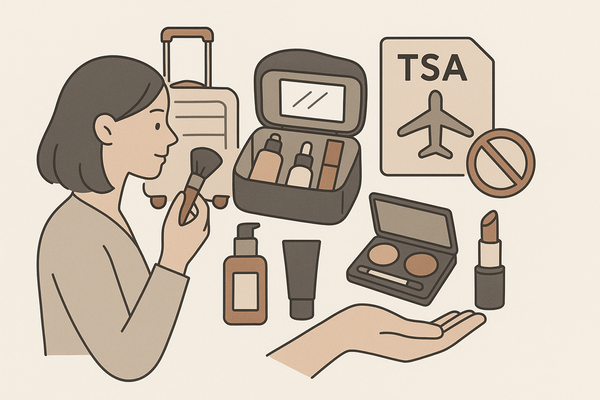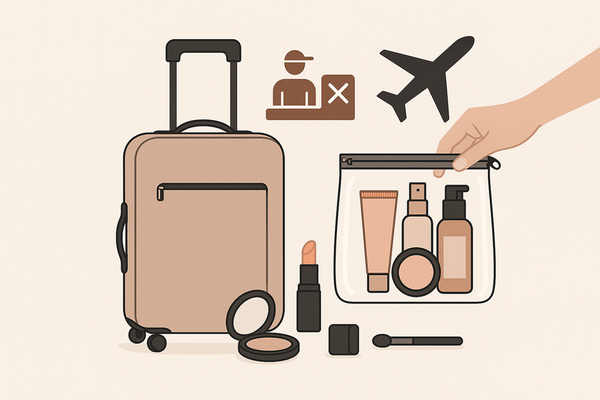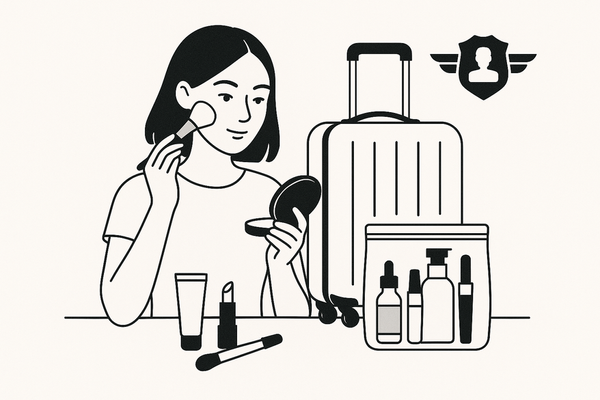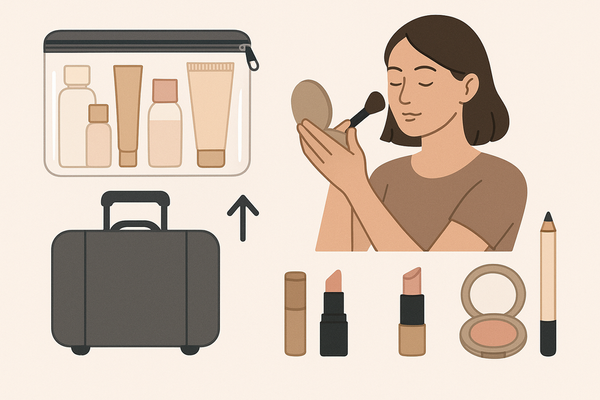Tech Innovations Driving Makeup Check AI: Revolutionizing Beauty with Artificial Intelligence
Explore how tech innovations driving makeup check AI are transforming the beauty industry with personalized routines, AR try-ons, and real-time diagnostics.
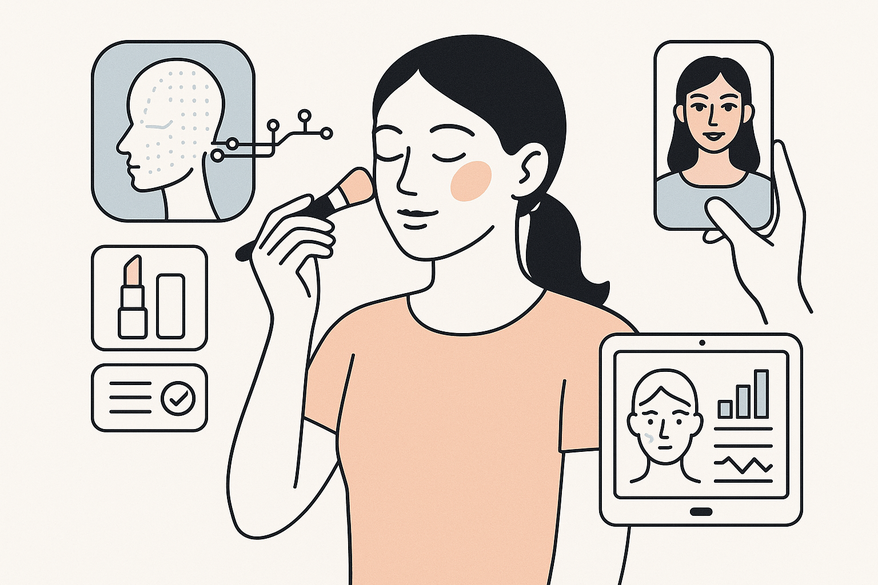
Estimated reading time: 8 minutes
Key Takeaways
- Deep learning powers hyper-personalized skin diagnostics and shade matching.
- Augmented reality enables lifelike virtual makeup try-ons, reducing product returns.
- Mobile apps deliver real-time beauty advice with intuitive UI and on-device AI.
- Cloud computing ensures scalable processing and continuous AI model updates.
- Emerging trends include anticipatory beauty routines, voice control, and wearable skin monitoring.
Table of Contents
- Introduction
- Overview of Makeup Check AI
- Key Tech Innovations Reshaping Makeup Check AI
- Detailed Examination: How Each Innovation Drives Makeup Check AI
- Impact on User Experience & Industry Trends
- Challenges & Future Outlook
- Conclusion
- FAQ
I. Introduction
In recent years, tech innovations driving makeup check AI have transformed how consumers engage with beauty products. This surge of AI-powered beauty tools is reshaping personalization and real-time interactivity.
Digital transformation in the beauty industry is no longer optional for brands. AI-powered systems now offer data-driven recommendations, precise skin diagnostics, and highly personalized routines that enhance consumer engagement and loyalty.
II. Overview of Makeup Check AI
Makeup Check AI refers to a suite of AI-driven tools that assess facial features, analyze skin conditions, and deliver personalized makeup recommendations or virtual try-ons.
In practice, apps like Makeup Check AI demonstrate how AI-driven pipelines integrate skin diagnostics and virtual try-ons for seamless personalization. You can see how it works in this quick how-to video:
Key functionalities of makeup check AI:
- Personalized product recommendations based on skin diagnostics.
- Virtual makeup try-ons using augmented reality.
- Automated shade matching with dynamic adjustment for lighting, skin tone, and occasion.
- Real-time feedback loops suggesting product tweaks or alternative shades.
III. Key Tech Innovations Reshaping Makeup Check AI
Four foundational technologies power the evolution of Makeup Check AI:
A. Machine Learning & Deep Learning Algorithms
- Machine learning uses statistical models that learn skin and facial patterns from large datasets.
- Deep learning relies on multi-layer neural networks (e.g., convolutional neural networks) specialized in image analysis.
- These algorithms detect skin tone, facial landmarks, and imperfections for hyper-personalization.
B. Augmented Reality (AR) Technologies
- AR overlays digital makeup onto a live camera feed in real time. Learn more about AR-powered try-ons.
- Computer vision techniques include real-time face mapping and texture retargeting.
- AR enables realistic virtual applications of lipstick, foundation, and eye makeup.
C. Mobile App Developments
- Smartphone platforms combine AI engines, camera diagnostics, and intuitive UI/UX for on-the-go beauty advice. For insights into AI beauty apps.
- Convenience factors include anywhere access, instant feedback, and push notifications for routine reminders.
D. Cloud Computing
- Cloud computing uses remote servers to handle heavy data processing, storage, and analytics.
- Scalability benefits include rapid image processing, centralized beauty databases, and continuous model updates.
IV. Detailed Examination: How Each Innovation Drives Makeup Check AI
A. Machine Learning & Deep Learning in Action
Convolutional Neural Networks (CNNs) are trained on millions of facial images to extract features such as pores, contours, and skin texture. These networks refine shade matching and product suggestions by learning from user interactions and feedback.
Case Study: L’Oréal + NVIDIA
- L’Oréal partnered with NVIDIA to leverage deep learning for enhanced skin diagnostics.
- This collaboration improved accuracy in detecting fine wrinkles and red spots, boosting recommendation relevancy.
B. AR-Enabled Virtual Try-Ons
Virtual try-on pipelines follow these steps:
- Face Detection – Identify facial region.
- Landmark Mapping – Locate eyes, lips, and bone structure.
- Texture Rendering – Apply digital makeup textures.
- Real-Time Update – Adjust overlay as user moves.
Example: Perfect Corp’s YouCam Makeup photorealistic simulations reduce product returns by over 30% and enhance user trust and engagement.
C. Mobile App Integration
On-device AI inference uses smartphone CPUs or NPUs to process skin analysis locally, improving speed and privacy. Cloud-backed processing offers heavier computations for advanced analytics.
- YouCam Makeup: Over 1 billion downloads worldwide, enabling millions to preview makeup virtually.
- L’Oréal Perso: A smart IoT device that custom-blends foundation at home based on live skin analysis via its companion app.
D. Cloud Computing Infrastructure
RESTful APIs connect mobile front ends to GPU-accelerated instances for fast image analysis. Centralized data storage allows continuous model training and updates, ensuring recommendation accuracy improves over time.
- Scalable processing for peak user loads.
- Central beauty database accessible to multiple apps.
- Seamless software updates and AI model refinements.
V. Impact on User Experience & Industry Trends
A. Enhanced Customer Experience
- AI-powered personalization offers tailored consultations and step-by-step application guidance.
- Real-time environmental lighting analysis adjusts shade matching instantly.
- Interactive tutorials help users replicate professional techniques at home.
B. Inclusive Beauty Movement
AI expands shade ranges by training on diverse skin tones and textures. Brands can now cater to underrepresented demographics with equal precision.
C. Facial Recognition & Predictive Analytics
- Facial recognition builds unique user profiles, storing preferences and past looks.
- Predictive analytics forecasts user needs based on past purchases, seasonal trends, and demographic data.
D. Sustainability Advantages
Virtual try-ons reduce physical sampling, minimizing waste and carbon footprint. Brands can cut down on production of disposable tester products.
VI. Challenges & Future Outlook
A. Current Challenges
- Technological limitations: Variable lighting, low-resolution cameras, and rare skin conditions can affect algorithm accuracy.
- Privacy concerns: Collecting biometric data calls for GDPR-compliant consent frameworks and secure data storage.
- Ethical issues: Bias from non-inclusive training datasets can lead to unfair or inaccurate recommendations.
B. Future Prospects
- Advanced predictive analytics will offer anticipatory beauty advice, such as pre-event skincare routines.
- AR realism will improve through physics-based rendering and 3D depth mapping.
- Voice-controlled beauty guidance integrated with virtual assistants will enable hands-free application support.
- Wearable devices will provide continuous skin monitoring and on-the-fly recommendations.
VII. Conclusion
Tech innovations driving Makeup Check AI are revolutionizing personalization, accessibility, and sustainability in beauty. From AI-driven skin diagnostics to AR-powered virtual try-ons and cloud-based analytics, these technological trends empower consumers with expert-level guidance. Embrace these tools to elevate your beauty journey and stay ahead in a rapidly evolving landscape.
Subscribe for updates on the latest beauty tech, download demo apps, and follow industry leaders to experience the future of makeup today.
FAQ
- What is Makeup Check AI?
- Makeup Check AI is a collection of AI-driven tools that analyze facial features and skin conditions to offer personalized makeup recommendations and virtual try-ons.
- How do AR virtual try-ons work?
- AR try-ons use real-time face mapping, landmark detection, and texture rendering to overlay digital makeup on a live camera feed, adjusting as users move.
- Is my data secure when using these apps?
- Reputable platforms use GDPR-compliant frameworks, secure data storage, and on-device inference to protect biometric data and user privacy.

